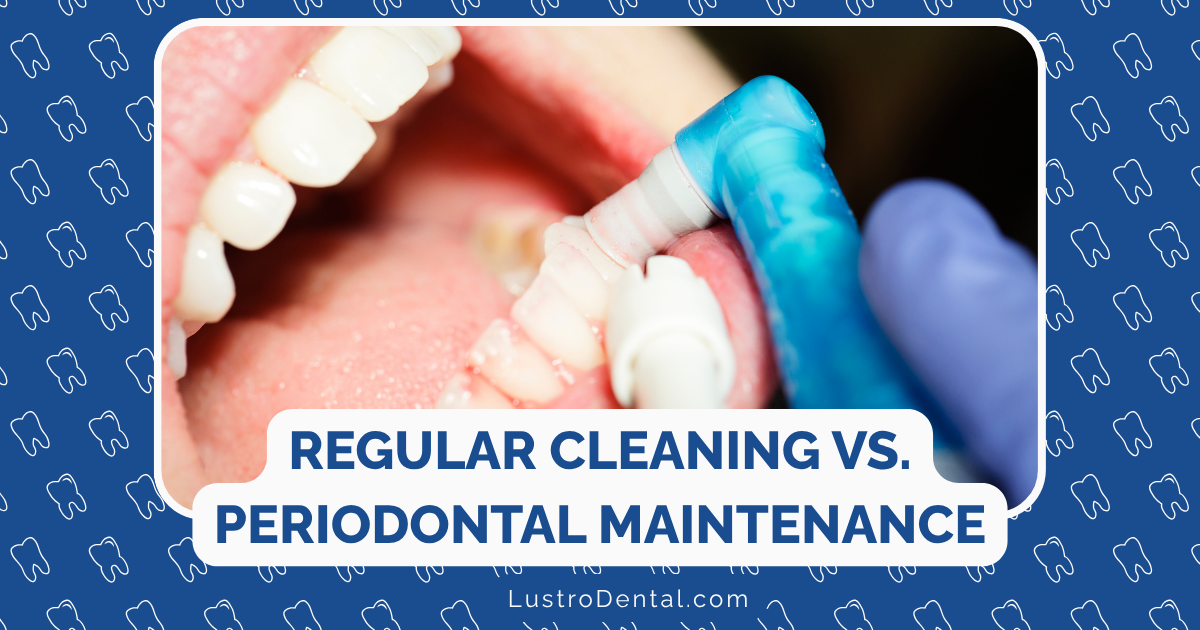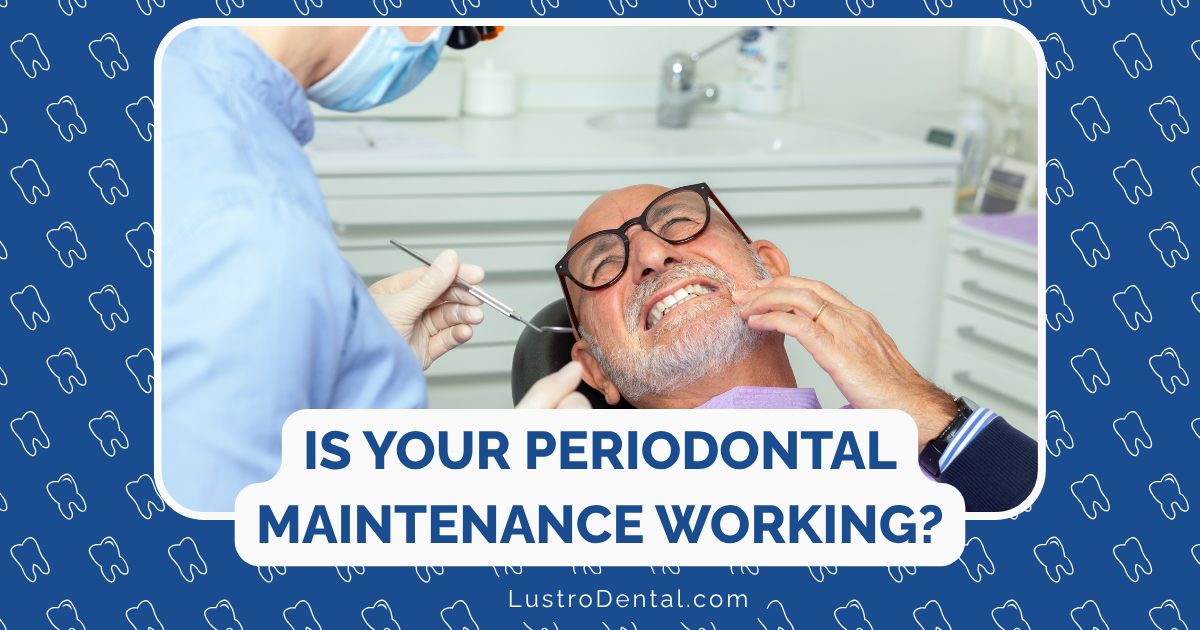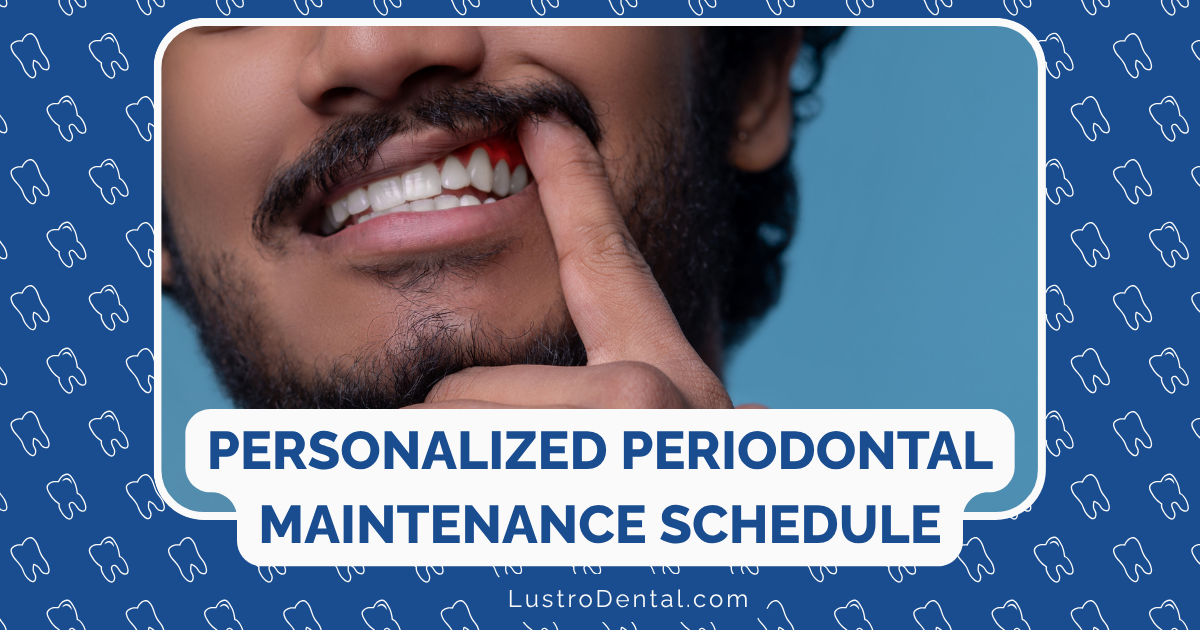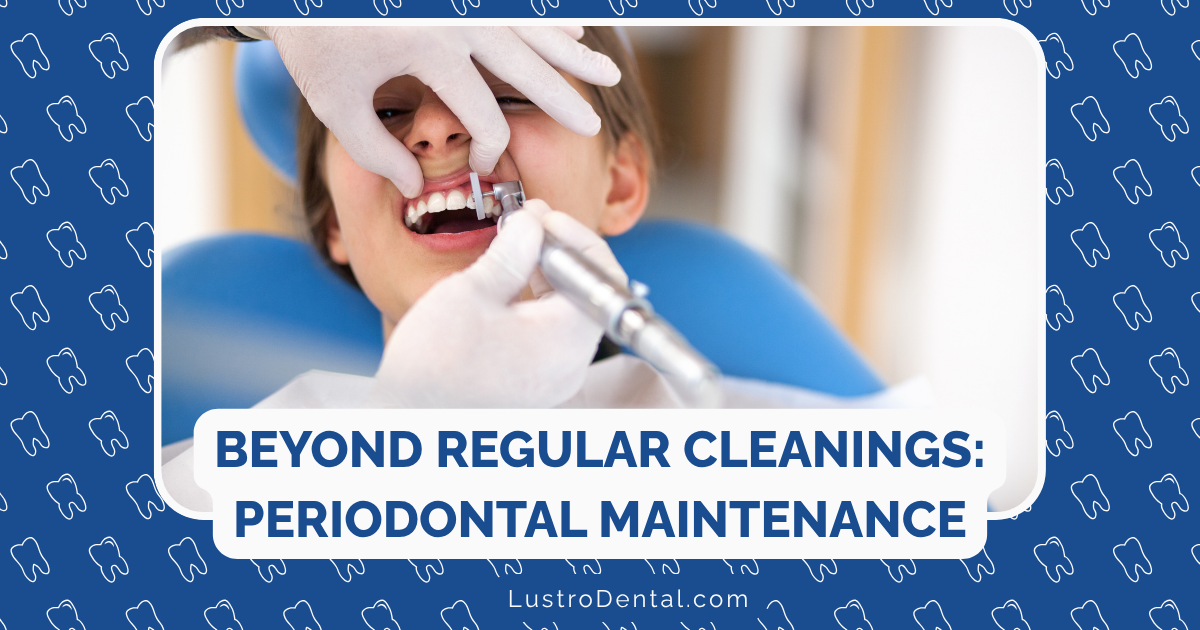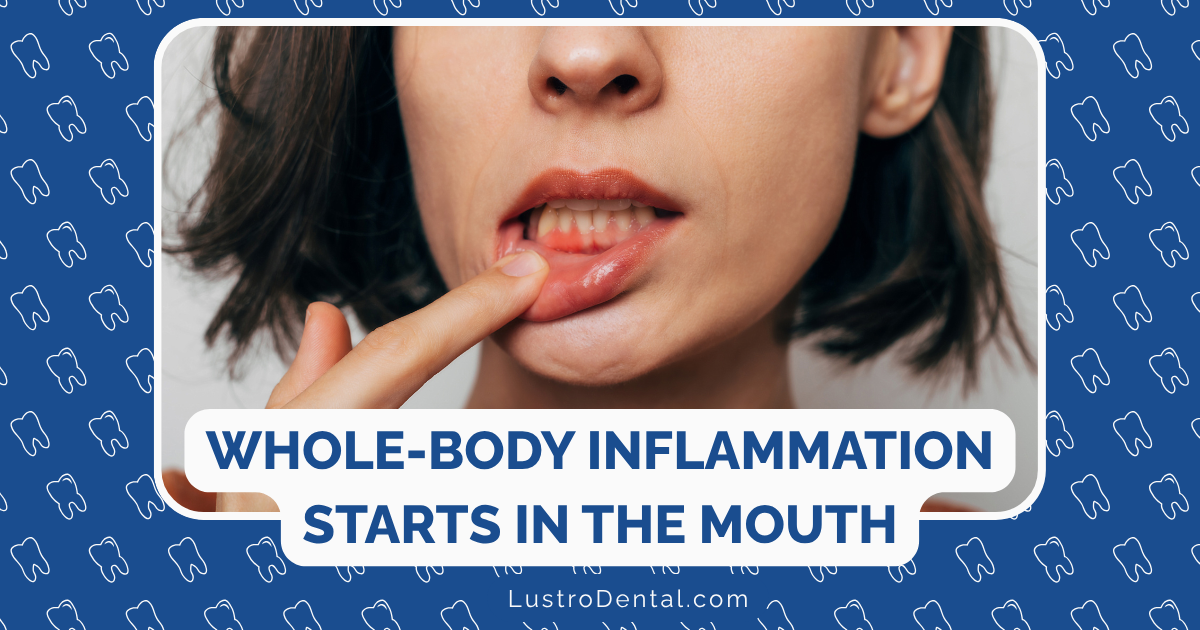Bleeding Gums Are Never Normal: Early Warning Signs of Gingivitis
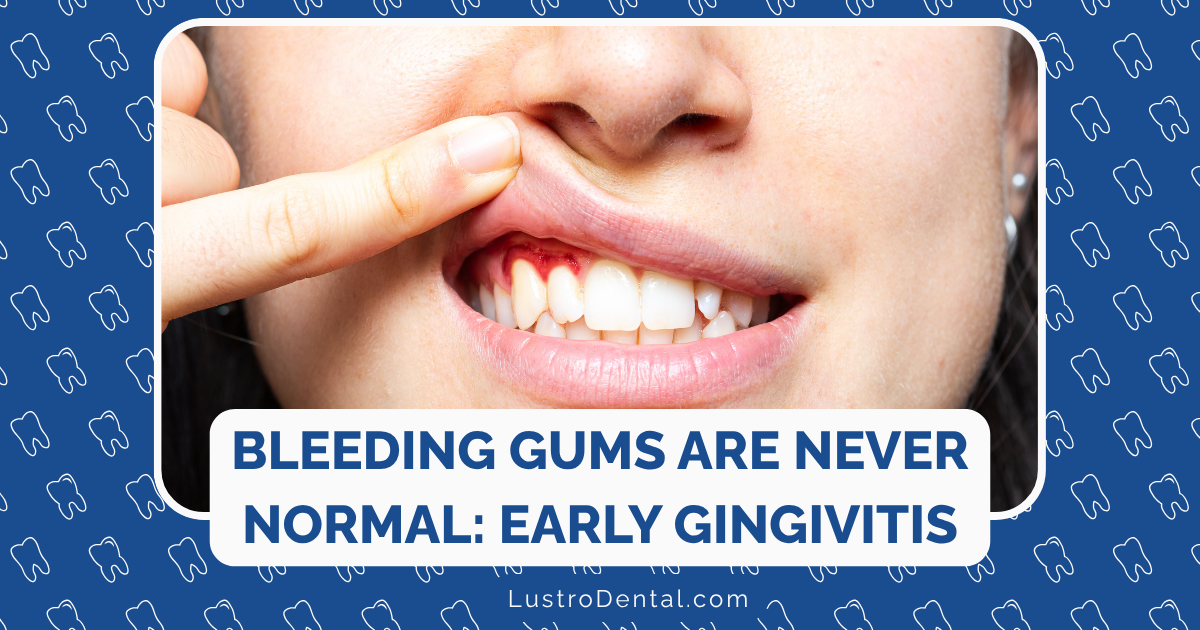
Have you ever noticed pink in the sink after brushing or flossing? If so, you’re not alone. Many people dismiss bleeding gums as a normal occurrence, especially if there’s no pain involved. But as a dental professional, I want to be clear: bleeding gums are never normal. They’re actually one of the earliest and most important warning signs of gingivitis, the initial stage of gum disease.
This early warning sign deserves your attention because gingivitis is both common and preventable. According to the Cleveland Clinic, almost half of all adults over 30 have some form of gum disease. Catching and addressing gingivitis early can prevent its progression to more serious periodontal disease, which can lead to tooth loss and has been linked to numerous systemic health conditions.
In this article, I’ll explain why your gums bleed, the early warning signs of gingivitis you should never ignore, and what you can do to restore your gum health.
Why Do Healthy Gums Never Bleed?
Healthy gum tissue is resilient and designed to withstand the daily activities of eating and proper oral hygiene. When your gums are in good condition, they:
- Appear pink and firm (though some variation in color is normal depending on ethnicity)
- Fit snugly around your teeth
- Don’t bleed when brushing, flossing, or eating
Think about it this way: if your hands bled every time you washed them, you’d be concerned and likely seek medical attention. The same logic should apply to your gums. Bleeding is a sign that something isn’t right.
The Early Warning Signs of Gingivitis
Gingivitis is the mildest form of gum disease, characterized by inflammation of the gums. According to the American Academy of Periodontology, the good news is that gingivitis is completely reversible with professional treatment and good oral home care. However, if left untreated, it can progress to periodontitis, which can cause permanent damage to the tissues and bone supporting your teeth.
Here are the early warning signs of gingivitis you should never ignore:
1. Bleeding Gums
This is often the first and most noticeable sign. Your gums may bleed when:
- Brushing your teeth
- Flossing (especially if you haven’t flossed regularly)
- Eating crunchy foods
- Using toothpicks
Many people incorrectly believe that bleeding while flossing means they should floss less, when in fact, the opposite is true. Consistent, proper flossing helps reduce the inflammation that causes bleeding.
2. Changes in Gum Color
Healthy gums typically appear pink and stippled (similar to the texture of an orange peel). With gingivitis, your gums may:
- Become red or purplish in color
- Look shiny rather than stippled
- Show visible redness along the gum margins (where the gums meet the teeth)
These color changes indicate inflammation in response to bacterial buildup along the gum line.
3. Swollen or Puffy Gums
Inflammation causes the gum tissues to swell. You might notice:
- Puffy-looking gums that seem to bulge
- Gums that have lost their firm, knife-edge appearance where they meet the teeth
- Enlarged interdental papillae (the triangular portions of gum between teeth)
4. Tender Gums
While gingivitis is often painless, which is why it can go unnoticed, some people experience:
- Tenderness when brushing or flossing
- Discomfort when pressing on the gums
- Sensitivity to hot or cold foods and beverages
5. Bad Breath or Unpleasant Taste
The bacteria causing gingivitis can produce volatile sulfur compounds that result in:
- Persistent bad breath that doesn’t improve with brushing
- A metallic or unpleasant taste in your mouth
- Bad taste when flossing specific areas
6. Receding Gums
As gingivitis progresses, you might notice:
- Teeth that appear longer than before
- Visible tooth roots
- Increased sensitivity along the gum line
- Spaces developing between teeth
Gum recession is a more advanced sign that gingivitis may be progressing to periodontitis.
What Causes Gingivitis?
Understanding the causes of gingivitis can help you take targeted action to prevent and treat it.
Primary Cause: Plaque Buildup
The main culprit behind gingivitis is dental plaque—a sticky, colorless film of bacteria that constantly forms on your teeth. According to the National Center for Biotechnology Information, plaque-induced gingivitis is the most common form.
When plaque isn’t removed through daily brushing and flossing:
- It hardens into tartar (calculus) within 24-72 hours
- Tartar can only be removed by a dental professional
- The bacteria in plaque and tartar release toxins that irritate the gums
- Your body’s immune response to these bacteria causes inflammation
Other Contributing Factors
While plaque is the primary cause, several factors can increase your risk or worsen gingivitis:
1. Poor Oral Hygiene
Inadequate brushing and flossing allow plaque to accumulate along the gum line.
2. Hormonal Changes
Fluctuations in hormones can make gums more sensitive and reactive to plaque. This commonly occurs during:
- Puberty
- Menstruation
- Pregnancy (pregnancy gingivitis affects up to 75% of pregnant women)
- Menopause
3. Nutritional Deficiencies
According to Healthline, certain vitamin deficiencies can contribute to gum problems:
- Vitamin C deficiency can lead to weakened gum tissue and increased bleeding
- Vitamin D deficiency is associated with higher rates of periodontal disease
- Vitamin K deficiency can cause easy bleeding
- B vitamin deficiencies may impair gum health
4. Medical Conditions
Several health conditions can increase your risk of developing gingivitis:
- Diabetes (uncontrolled diabetes significantly increases risk)
- Autoimmune disorders
- HIV/AIDS
- Leukemia
- Stress (which weakens your immune response)
5. Medications
Certain medications can affect oral health:
- Some anticonvulsants
- Calcium channel blockers
- Immunosuppressants
- Oral contraceptives
- Medications that cause dry mouth (reducing the protective effects of saliva)
6. Smoking and Tobacco Use
Tobacco use is one of the most significant risk factors for gum disease, as it:
- Impairs blood flow to the gums
- Weakens the immune response to bacterial infection
- Masks symptoms (smokers may have less bleeding despite severe disease)
7. Genetics
Family history can play a role in your susceptibility to gum disease. According to the Cleveland Clinic, up to 30% of the population may have a genetic predisposition to gum disease.
Why You Shouldn’t Ignore Bleeding Gums: Beyond Oral Health
The importance of addressing bleeding gums extends beyond just maintaining a healthy mouth. Research has established strong links between periodontal disease and several serious health conditions:
Heart Disease and Stroke
According to a study published in PMC, severe periodontal disease is linked to a 25% to 90% increase in risk for cardiovascular disease. The inflammation from gum disease can:
- Allow oral bacteria to enter the bloodstream
- Contribute to arterial plaque formation
- Increase systemic inflammation, a risk factor for heart disease
Diabetes
There’s a bidirectional relationship between diabetes and periodontal disease:
- People with diabetes are more susceptible to infections, including gum disease
- Periodontal inflammation can make it harder to control blood sugar
- Treating gum disease can help improve glycemic control in diabetic patients
Pregnancy Complications
Research has shown associations between periodontal disease in pregnant women and:
- Preterm birth
- Low birth weight babies
- Gestational diabetes
A study from PMC found that women with gestational diabetes were 2.6 times more likely to have periodontitis compared to those without.
Respiratory Conditions
Bacteria from the mouth can be aspirated into the lungs, potentially causing or worsening:
- Pneumonia
- Chronic obstructive pulmonary disease (COPD)
- Other respiratory infections
Cognitive Health
Emerging research suggests possible links between periodontal disease and cognitive conditions like Alzheimer’s disease, though more studies are needed to fully understand this connection.
Treating and Reversing Gingivitis
The good news is that gingivitis is completely reversible. With proper care, you can restore your gums to health and prevent progression to more serious periodontal disease.
Professional Treatment
If you notice signs of gingivitis, schedule a dental appointment for:
1. Professional Cleaning (Prophylaxis)
A dental hygienist will:
- Remove all plaque and tartar (calculus) from your teeth
- Clean along and slightly below the gum line
- Polish your teeth to remove stains and make it harder for plaque to adhere
2. Scaling and Root Planing (if necessary)
For more advanced cases, this deeper cleaning:
- Removes plaque and tartar from below the gum line
- Smooths root surfaces to discourage future plaque accumulation
- May be done with local anesthesia for comfort
3. Treatment Plan and Education
Your dental professional will:
- Demonstrate proper brushing and flossing techniques
- Recommend appropriate oral hygiene products
- Address any contributing factors (like smoking or medications)
- Schedule follow-up visits to monitor improvement
Home Care Essentials
Effective home care is crucial for treating gingivitis and preventing its return:
1. Proper Brushing
- Brush at least twice daily for two minutes each time
- Use a soft-bristled toothbrush to avoid gum damage
- Hold the brush at a 45-degree angle to the gum line
- Use gentle, circular motions rather than aggressive scrubbing
- Consider an electric toothbrush, which can be more effective at removing plaque
2. Daily Flossing
- Floss at least once daily
- Use proper technique: curve the floss around each tooth in a C-shape
- Gently slide the floss below the gum line
- If traditional floss is difficult, try floss holders, water flossers, or interdental brushes
3. Antimicrobial Mouthwash
- Use an ADA-approved antimicrobial mouthwash
- Look for ingredients like chlorhexidine (prescription), cetylpyridinium chloride, or essential oils
- Rinse for the full recommended time (usually 30-60 seconds)
4. Address Nutritional Deficiencies
Consider supplements if you’re deficient in:
- Vitamin C (supports collagen production and gum healing)
- Vitamin D (supports immune function and bone health)
- Omega-3 fatty acids (anti-inflammatory properties)
- Coenzyme Q10 (may help reduce gum inflammation)
5. Lifestyle Changes
- Quit smoking and tobacco use
- Manage stress through relaxation techniques
- Control blood sugar if you have diabetes
- Stay hydrated to maintain adequate saliva production
Prevention: Keeping Gingivitis Away for Good
Once you’ve resolved gingivitis, maintaining good habits is essential to prevent recurrence:
1. Consistent Oral Hygiene
- Stick to your brushing and flossing routine even when symptoms improve
- Replace your toothbrush every 3-4 months or when bristles become frayed
- Clean your tongue daily to reduce bacteria
2. Regular Dental Visits
- Maintain professional cleaning appointments every 6 months
- More frequent visits (every 3-4 months) may be recommended if you have risk factors
- Don’t postpone appointments even if your gums seem healthy
3. Healthy Diet
- Limit sugary foods and beverages
- Eat a balanced diet rich in vitamins and minerals
- Include crunchy fruits and vegetables, which can help clean teeth naturally
- Stay hydrated to maintain saliva production
4. Monitor Your Gums
- Check your gums regularly for changes in color, texture, or bleeding
- Use a mouth mirror to examine areas that are difficult to see
- Address any signs of recurrence promptly
When to Seek Immediate Dental Care
While gingivitis is typically not an emergency, certain symptoms warrant prompt attention:
- Severe or persistent gum bleeding
- Rapid onset of gum swelling or pain
- Gum abscess (pimple-like bump on the gum)
- Loose permanent teeth
- Sudden changes in your bite
- Gum recession that progresses quickly
These could indicate a more serious condition requiring immediate treatment.
Conclusion: Take Action at the First Sign of Bleeding
Bleeding gums are your body’s way of alerting you to a problem that requires attention. Rather than ignoring this warning sign or assuming it’s normal, use it as motivation to improve your oral hygiene and seek professional care.
Remember that gingivitis is completely reversible, but only if you take action. The sooner you address the early warning signs, the easier it is to restore your gums to health and prevent more serious complications.
Your smile is too important to risk—and so is your overall health. If you notice bleeding gums or any other signs of gingivitis, schedule a dental appointment and start implementing the home care strategies outlined in this article. Your gums will thank you with years of healthy, problem-free support for your teeth.
Have you experienced bleeding gums? What steps did you take to address the issue? Share your experiences in the comments below.


